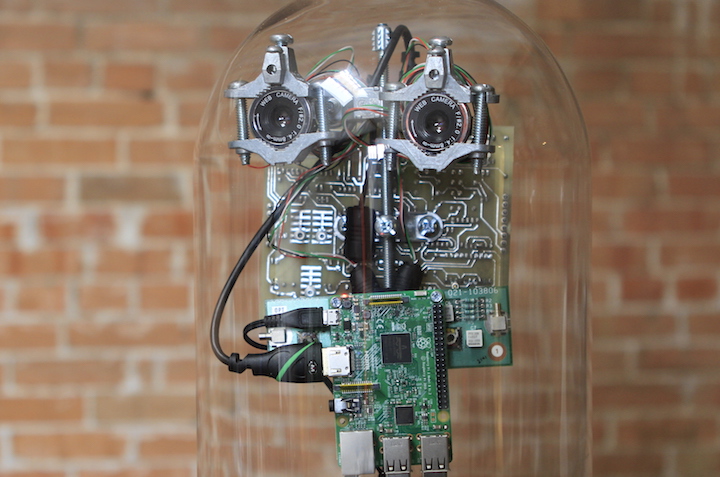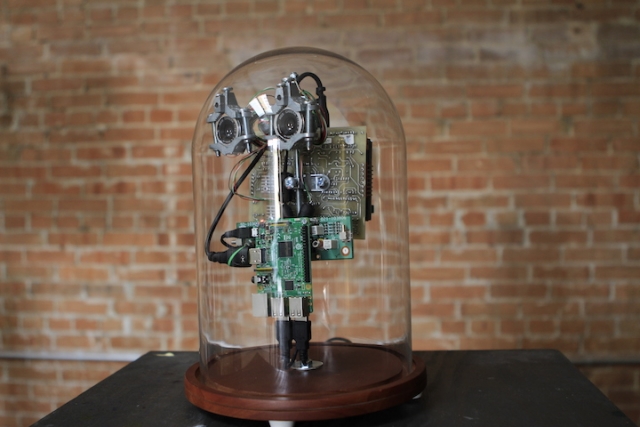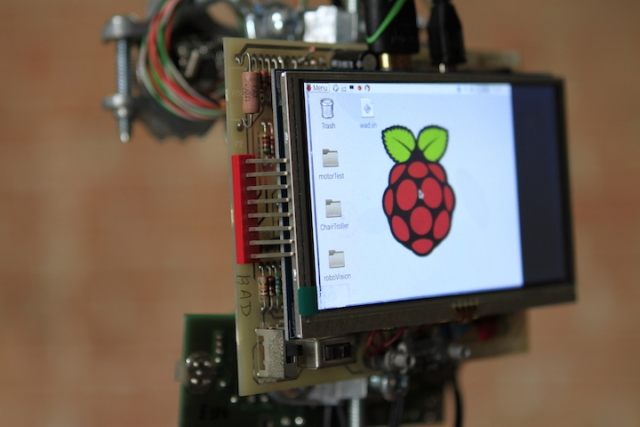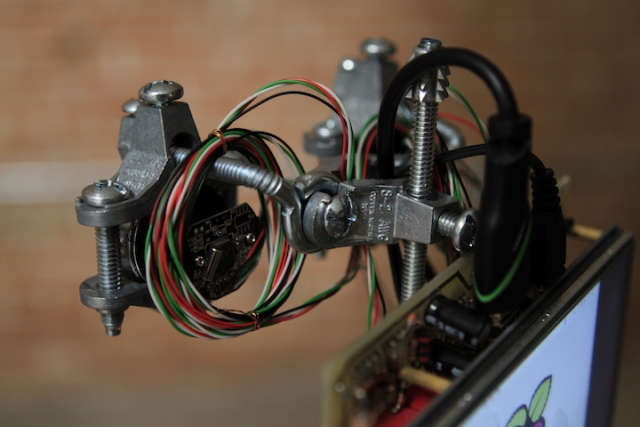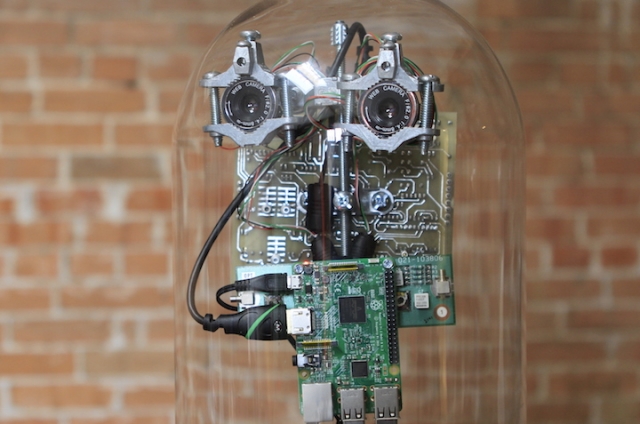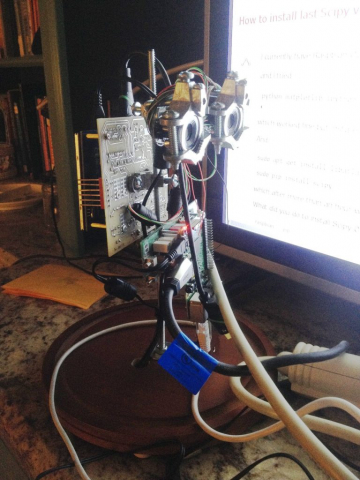My third iteration of the “Post-human prototype” advances to version 03 and is becoming more “advanced,” even if only based on our current perceptions of technology. The main difference with the previous artworks in the series is that there is no human anatomical detail shown: the entire form is created using mechanical or electronic components. The human face is still prevalent in the visual perception of the piece due to the use of dual cameras that are bracketed by aluminium hardware attached to the central core of the “prototype”. The placement of the cameras in relationship to the boards and wires used to construct the model, create a visual resemblance to a humanoid robot and invokes an emotional connection of the viewer with the mechanical face.
The design of the prototype is intended to explore human vision and perception in the context of a computer based neurological network system. I am exploring the human perception through the “digital eye”: vision that is not intended to have a “clear and realistic” stereoscopic representation of reality. Instead I am more interested in infusing the image captured by the cameras with a visual parabola of what human perception is, or what it could be in the future “when we all become robots”.
From the technical point of view, this last project was a bit more challenging than the previous ones. The hardware to be used was supposed to support multiple IO connections, such as USB cameras as well as a video output solution such as HDMI. The platform that I have chosen (and recommended to work with by Nic Lupfer) was a Raspberry PI Linux based system. The script to overlap two video signals was written by Nic in Python; however, I am looking into modifying the output video by using Processing that I feel will allow me more creative flexibility.
In conclusion, I would like to go over a few observations of the viewers that interacted with my artwork through the last series of exhibitions and presentations. It all started when I introduced my first project “Post-human Prototype 01.” As the condensation from the organic materials filled the glass dome, viewers asked why was that phenomenon happening. When told jokingly ‘it’s breathing,’ they were shocked, but to my surprise believed it right away. In front of the mechanical eyes, viewers wave their hands, assuming that the computer screen can ‘see’ them and expected to “be seen” by the “robot face”.
An unanticipated interactive effect of this series is the ways that the ‘human’ wishes to become the ‘post-human’ by projecting its own abilities and sensations onto the machine. I.e. I (the artist) might have assumed the series was about artificiality (what cannot be successfully captured by technology), but the viewers wanted it to be about the ‘human machine.’ Observing the viewers interact with my work has been an unexpended and interesting outcome that I couldn’t have predicted when I got started with my series of projects.

